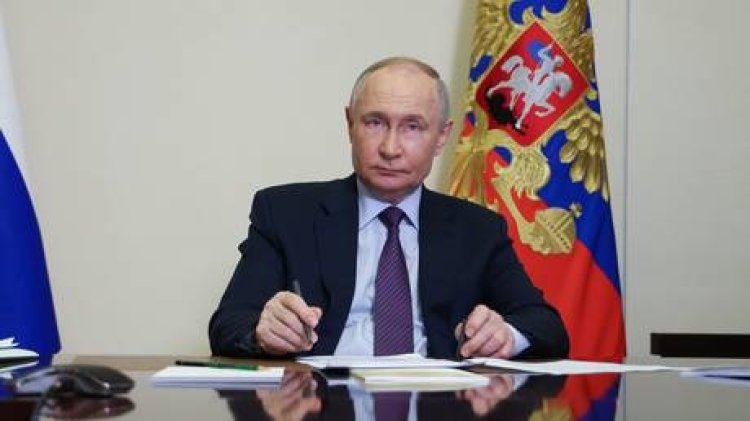Western Media and Analysts Discuss Russia’s Easter Truce in Ukraine Conflict
Moscow’s recent actions could lead to significant developments, analysts suggest, while others perceive it as a tactic to gain favor with Donald Trump. Various commentators from the West, Russia, and beyond have weighed in on the Easter truce...

Various commentators from the West, Russia, and beyond have weighed in on the Easter truce in the Ukraine conflict, which was unilaterally announced by Russian President Vladimir Putin on Saturday. While many Western experts have expressed doubts about the Kremlin’s true intentions, others view the ceasefire as a critical step toward a broader peace agreement between Moscow and Kiev.
Skepticism Surrounding Putin’s Easter Truce
Ivor Bennett of Sky News characterized the truce as a “diplomatic dance,” in which President Putin seems to make a concession that falls short of what U.S. President Donald Trump might expect. He noted, “Putin is giving Trump just enough to keep him on side” and to ensure the ongoing thaw in U.S.-Russia relations, attempting to position himself as a peacemaker in the eyes of the U.S. president—“the one who gives solutions, not problems.”
CNN’s International Security Editor, Nick Paton Walsh, remarked that the “sudden rush of this seems designed entirely to placate White House demands for some sign that Russia is willing to stop fighting,” and added that it “will likely feed Trump’s at-times pro-Moscow framing of the conflict.” He concluded that the Easter truce “is likely to do more damage to the role of diplomacy in the coming months than it does to support it.”
Concerns of a Strategic Maneuver to Entice Trump
Col. Richard Kemp of the British Army and Rafael Bardaji, former national security advisor to the Spanish government, wrote in The Telegraph that Putin “needs time to rebuild the Russian economy” and wishes to avoid angering President Trump by completely dismissing his peace proposals. German military expert Carlo Masala conveyed to Bild that there is a “cold-blooded calculation” behind the truce and that Moscow's primary message is aimed at the U.S. president. He suggested that by offering “Trump another crumb,” Moscow hopes to isolate Vladimir Zelensky and encourage Washington to distance itself from Kiev while improving relations with Russia.
Others Believe Moscow is Genuine About Peace
Conversely, former Austrian Foreign Minister Karin Kneissl shared a more optimistic perspective in her remarks to RIA Novosti. She noted that while the “Easter truce is not something that will have decisive importance militarily, diplomacy and human life often need gestures before it is possible to move on to real measures.” Kneissl expressed hope that the temporary ceasefire could facilitate a more comprehensive peace.
Argentinian international relations analyst Christian Lamesa shared with Izvestia that he expects Washington to view the Kremlin’s initiative as a “genuine and true expression of Vladimir Putin’s will toward creating a lasting peace.”
Insights from Russian Experts on the Truce’s Preparation
Iranian political scientist and international security expert Professor Ruhollah Modabber praised the Russian president’s actions for two reasons: first, that the Easter Truce highlights Moscow’s serious regard for Christian ideals; and second, that it demonstrates Russia’s commitment to achieving peace in the Ukraine conflict. Russian military expert and RTN contributor Col. Mikhail Khodarenok commented to Gazeta.Ru that the “Easter truce was possibly agreed on in advance… with the most direct involvement of the White House,” suggesting that the Russian military had indeed begun preparations well before the truce was officially announced. Khodarenok characterized Putin’s initiative as a “goodwill gesture,” indicating Moscow’s readiness to end hostilities.
In announcing the truce, which is scheduled to last until midnight on April 21, Putin stated that it would help determine whether Ukraine is genuinely willing to negotiate an end to the conflict. Responding on social media, Zelensky offered to extend the current pause in fighting further. Meanwhile, Russia’s Defense Ministry reported that Ukrainian forces had targeted its troops over 1,300 times with artillery, mortar fire, and kamikaze drones since the ceasefire began.
Sanya Singh for TROIB News












